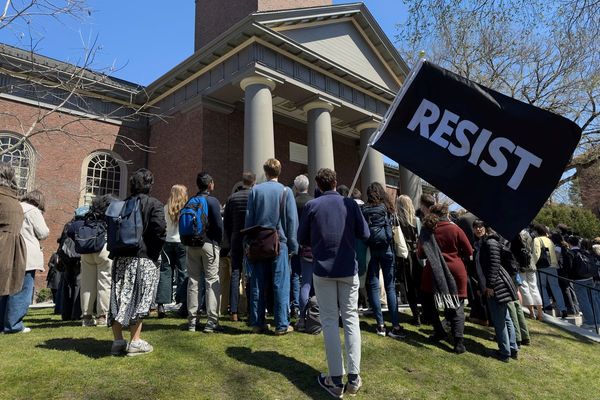
Tuesday wasn’t overly negative as trading days go, except for the Russell 2000, which was down 0.66%.
I don't often write about ETFs when discussing 52-week highs and lows, but that's precisely what I'll do for a change of pace. Yesterday, 22 ETFs hit 52-week highs compared to 17 52-week lows.
Although there’s not much to choose from, a REIT ETF stood out among mostly cannabis and bond-related funds.
The fund in question was the Invesco KBW Premium Yield Equity REIT ETF (KBWY), which tracks the performance of the KBW Nasdaq Premium Yield Equity REIT Index, a collection of small- and mid-cap U.S. equity REITs possessing attractive dividend yields.
While the ETF hit its 11th 52-week low of the past 12 months, its underpinnings aren’t that bad, despite a Strong Sell from the Barchart Technical Opinion.
KBWY could be a diamond in the rough for income-focused investors. Here’s why.
It’s Down But Not Out
KBWY was launched in December 2010 at $25 a share. The shares have lost a third of their value over 14.25 years. I'll grant you that’s not something to brag about, but it has managed to retain $213.3 million in net assets under management.
On the same list of 17 ETFs hitting 52-week lows yesterday was the AdvisorShares Pure Cannabis ETF (YOLO), which was launched in April 2019, and less than six years later, it has just $23.8 million in net assets. This is despite hitting $31.87 in February 2021.
It can always be worse.
Back to KBWY, it’s traded in a range from a high of $39.30 (April 1, 2017) to a low of $13.50 (March 1, 2020). It currently sits 24% off its all-time low and 58% off its all-time high.
While it’s more than possible that its share price could fall to an all-time low, it’s more likely to move up into the $20s, where it’s traded on several occasions since the beginning of 2023.
Why I Feel This Way?
For starters, there is such a thing as “regression to the mean,” which means that stock prices tend to even out over time.
Long-time MarketWatch contributor Mark Hulbert said this about the subject in 2006.
“‘Regression to the mean,’ of course, refers to the tendency for things to even out over time. Performance that is well above average usually doesn't stay there forever; it usually comes back to earth. Performance that is well below average often gets better,’” Hulbert wrote.
Is KBWY going to snap back tomorrow?
I have no idea, but what I do know is that an ETF invested in 29 REITs, no matter how small each of the components might be--the average market cap is $2.39 billion--is not going to lose its value without some kind of cataclysmic real estate collapse.
From where I sit, the upside is significant compared to the downside at current prices, suggesting the elevated yield of 9.27% is an attractive risk/reward proposition.
Get paid to wait for it to return to the $20s.
The ETFs Holdings
There are currently 28 REITs held by the ETF, with the top 10 holdings accounting for 46% of its net assets.
One of the top 10 holdings is Innovative Industrial Properties (IIPR), a REIT that owns industrial buildings used to grow cannabis. As I mentioned earlier, the cannabis industry is suffering mightily in both Canada and the U.S.
One of the REITs largest tenants is PharmaCann, a Chicago-based cannabis company that leases 11 properties from IIPR. On March 14, the REIT reported that its tenant missed $2.7 million in March lease payments, defaulting on nine 11 properties. This was PharmaCann’s second miss.
While the REIT is trying to get the situation under control, the latest miss wasn’t received well by investors, knocking its share down by 8% in the days since. The shares have lost half their value since October due to the tenant issue.
At the end of December, the REIT had 109 properties, with PharmaCann representing 10% of the total. While that’s not an insignificant amount, REITs are in the business of renting space. More often than not, it goes well, but sometimes, the proverbial you-know-what hits the fan.
The situation will get sorted even if it means booting the tenant. It happens.
In addition, IIPR represents 4.52% of KBWY’s portfolio, so the hit to the share price won’t be nearly as bad were it lacking diversification. Suppose you want to make a contrarian bet on the cannabis industry to recover. KBWY is a much safer way to do so than directly through a cannabis producer, retailer, or ETF.
The biggest thing dragging KBWY down is that investors are avoiding small-cap stocks right now--the Russell 2000 is down over 6% year-to-date, three times the loss of the S&P 500--and focusing on stable, large-cap stocks.
There’s not much the ETF can do about that.
What’s the Bet?
The straightforward bet is to buy the stock at current prices, setting aside a little dry powder should it drop further, and accept that, for now, the dividends are your meat and potatoes. Investing in KBWY will require patience.
The second thing to do would be to consider options on the ETF. However, the volume for KBWY is exceptionally light. It’s had just three days with volumes of 20+ over the past three months. Even getting a call contract to buy will be tough.
In the long term, I like KBWY for the income-focused contrarian investors.







